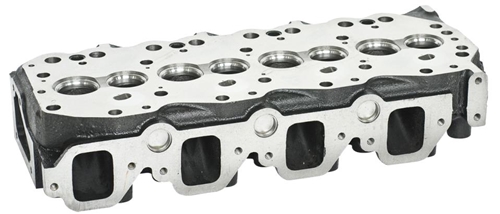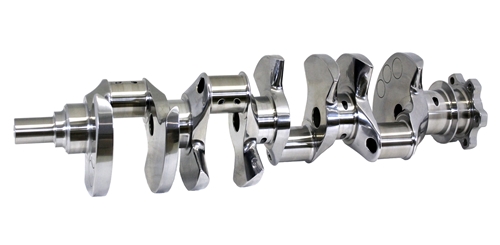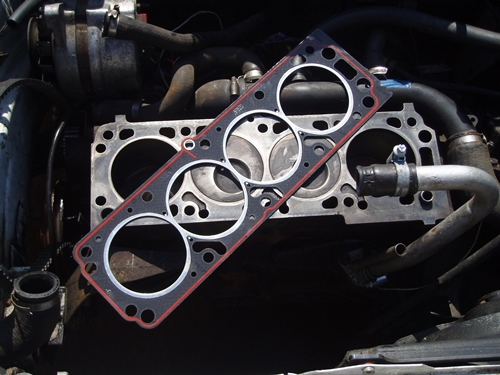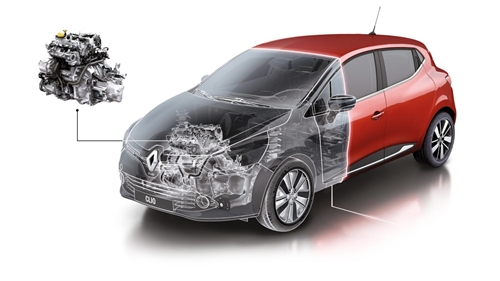Components And Maintenance Of An Internal Combustion Engine
Thanks to modern manufacturing methods, cars of today have very safe and reliable engines. These machines are very complex. Let’s talk about the components which add up to make an engine and how you can help protect them over time.
- Cylinder Block
Arguably the heart of the engine. This is where the fuel combustion takes place. This compartment is comprised of cylinders. More often then not all the components such as air intake, the exhaust passage, ports, and crankcase are associated with this block. Now you might be wondering why it’s been called the heart of the engine and how possibly it works. To really understand its working we need to know about other components of the engine mentioned below.

- Pistons
Now you already know about the cylinder block let’s talk about its friend. A piston is a small component with a ring-like circle at the bottom while having a flat surface on the top. The piston is designed to move freely back and forth in the cylinders. The purpose of a piston is to compress the air-fuel mixture and convert it into mechanical energy. If you ever wondered how an engine outputs power then this is your answer.

- Cylinder Head
The cylinder head is a cover designed to be attached above the cylinder block. Once the cylinders are fitted with pistons the cylinder block is then encapsulated with the help of a cylinder head. Why? The cylinder head helps stop the gases from entering or exiting from the cover head valves of the engine. If any gases escape or enter this means the Pistons will have to face less than optimal conditions during their transnational motion. Not only this other vital component such as spark plugs, valves, camshaft etc are also fitted to the cylinder head.

- Connecting Rods
As the name suggests connecting rods are used to connect pistons to the crankshaft and when the pistons produce a thrust, these connecting rods then transfer the thrust motion of the pistons to the crankshaft. Simple! These connecting rods are designed to last as a malfunctioning rods can end up being damaged and replacement requires complete disassembly of the engine.

- Crankshaft
Now you have already known about the pistons having a back and forth motion in the cylinders but the real story lies ahead when the crankshaft helps make this translational motion into rotational motion. For your information, the crankshaft is present right below the cylinder block. It is attached with all the pistons and this component is mainly responsible for rotating the wheels of the vehicle.

- Oil Sump
Oil Sump doesn’t have any mechanical purpose in the engine but it is attached to the lower end of the engine. It houses all the oil required to lubricate the moving part in the engine saving them from damage and also helps cool down the components during heat-up. Simple and useful at the same time.

- Cam Shaft and Valves
By now you know that a cylinder block houses air and fuel mixture which is then used by the piston to turn into mechanical energy. Now the question arises that how does this air-fuel mixture come from? A cam shaft comprises of lobes (also called cams) which push against the values and in result open them to let air and fuel mixture in. Valves are small devices used to regulate the flow of this air and fuel while also letting the exhausts gases out. These valves are fitted with springs which take them to their original position as this process takes place continuously. This is a very critical process and the camshaft is designed in such a way that it opens and closes the valves in time in accordance with the movement of the piston.

(Left: Values Right: Camshaft)
- Spark Plugs
Spark plugs are small devices which help ignite the air/fuel mixture present in the cylinder block and how exactly it does that? Well as the name suggested spark plugs are responsible for producing a spark which is then delivered to the combustion chamber. The design of spark plug is made of a metal shell containing a resistor which is connected to an insulated wire to the output terminal of the ignition coil. Spark plugs are connected to the engine’s cylinder head and are also electrically grounded.

- Manifold
Also known as inlet manifold is the part of the engine which serves the purpose of evenly serving the air and fuel mixture for the intakes while collecting all the exhaust gases. It is bolted on the cylinder head and it has one pipe for each cylinder for collecting gases. The even serving of the mixture is very effective to optimize engine performance along with efficiency.

- Head Gaskets
Head gasket is kind of a sheet which sits between the cylinder block and cylinder head. It is necessary for the proper sealing. This helps ensure that there are maximum compression and no gas leakage from the cylinder block. It is one of the necessary parts of any engine. Head gaskets come in different types
- Multi-layer Steel
- Solid Copper
- Composite
- Elastomeric

Now you know about different components of an engine let’s talk about the more important part which is how you can keep engine parts of your car in best shape for a long period of time.
- Oil Change
Engines have many moving parts which produce excessive heat. When it comes to machines or electronics heat is not a very good thing and oil keeps vital parts of the engine lubricated which in results helps the parts to cool down easily. If you don’t change the oil every once in a while this can cause internal damage and significantly reduce the engine life and performance. It’s suggested to have an engine oil change every 4000 Kms or less. There are many engine oil’s available in the market today such as Havolin and Shell Helix. Make sure you check manufacturer recommended oil for your car.

2. Cooling System
All cars have a cooling system which is the most effective way of cooling down the engine. A radiator, water pump, thermostat and a coolant are the part of this system responsible for the cooling process. Thermostat decides whether your engine needs cooling or not and when the engine overheats the water pump takes the coolant from the radiator and directs it towards the engine. During this process, some of the coolants is lost and this is where the problem begins. If the coolant falls dangerously low the cooling process will be affected. To avoid this pop out the hood and give the coolant tank a look. The tank is marked with an indicator mentioning the maximum and minimum mark. Make sure the coolant is on the max side. If your car still has problems cooling down even with the right coolant then get it checked by a professional.

- Air Filters
The basic purpose of the air filter is to keep the outside things from ending up in the engine while making sure it also gets clean air. These things include dust, dirt, insects or anything small enough to enter the engine bay. With the passage of time the air filters get in bad shape and often clogged. Which can deprive the engine of air or even let the outside things inside. All of this will contribute towards engine not doing its work right. To avoid this make sure you get the air filter replaced on time. There are multiple air filters available in the market today ranging from PKR 200-1500.

4. Belts
To run things like fan, water pump or even the air conditioners car engines come with belts. Al though their function can vary from car to car but they are very important. These rubbers belts usually run for very long but once they start to crack or show signs of wear you need to make sure you get them replaced as soon as possible. If a belt breaks this can cause some serious damage to the engine. Spot the damaged engine belts by popping off the hood and inspecting the belts by touching and turning it. The screeching noises from the car when the engine is running is also a clear indication for belt replacement. A belt replacement can cost around PKR2,500-5,000.

5. Spark Plug and Wires
Spark plugs are very important if you want your engine running smoothly. The wires send an electrical current to the spark plugs which in result produces a spark. Due to which in the cylinders air and fuel mixture ignites. With the passage of time spark plugs can lose their effectiveness which will make your engine working not so smooth. It is recommended to get the spark plugs and wires changed every 50,000kms to keep your engine happy. Each spark plug can cost around PKR 2,000 and expensive options like iridium and platinum plugs can last upto 70,000 kms or more.



